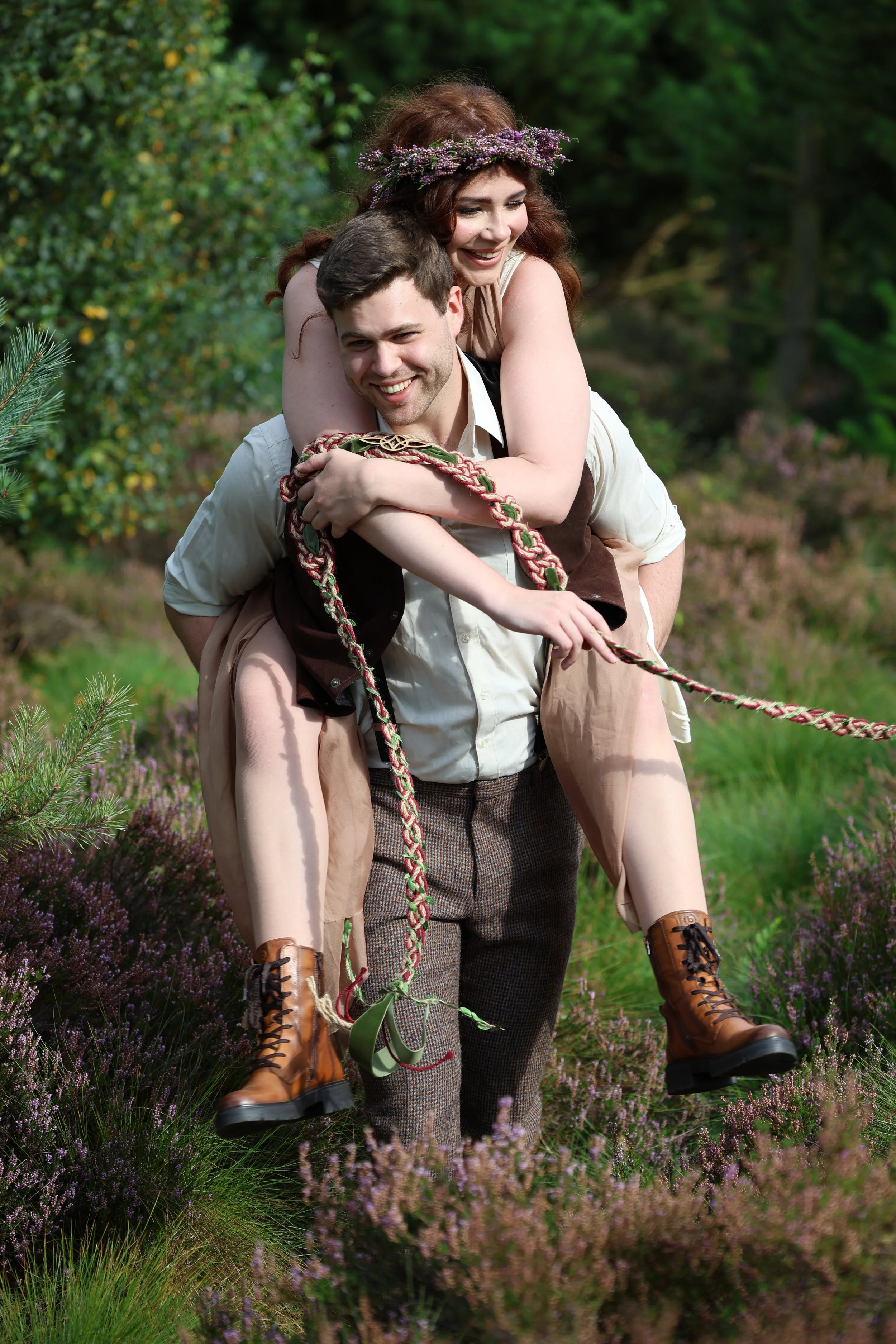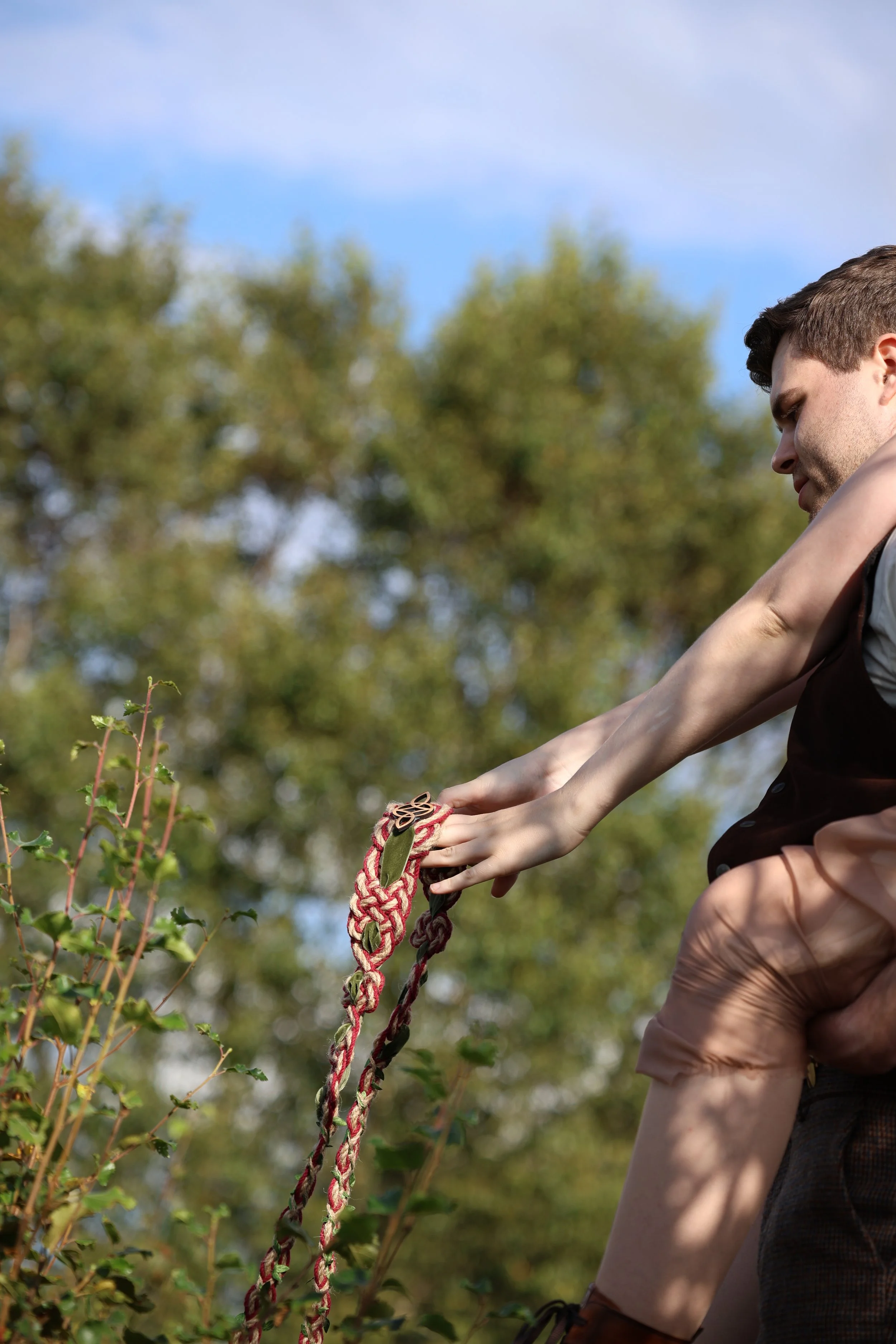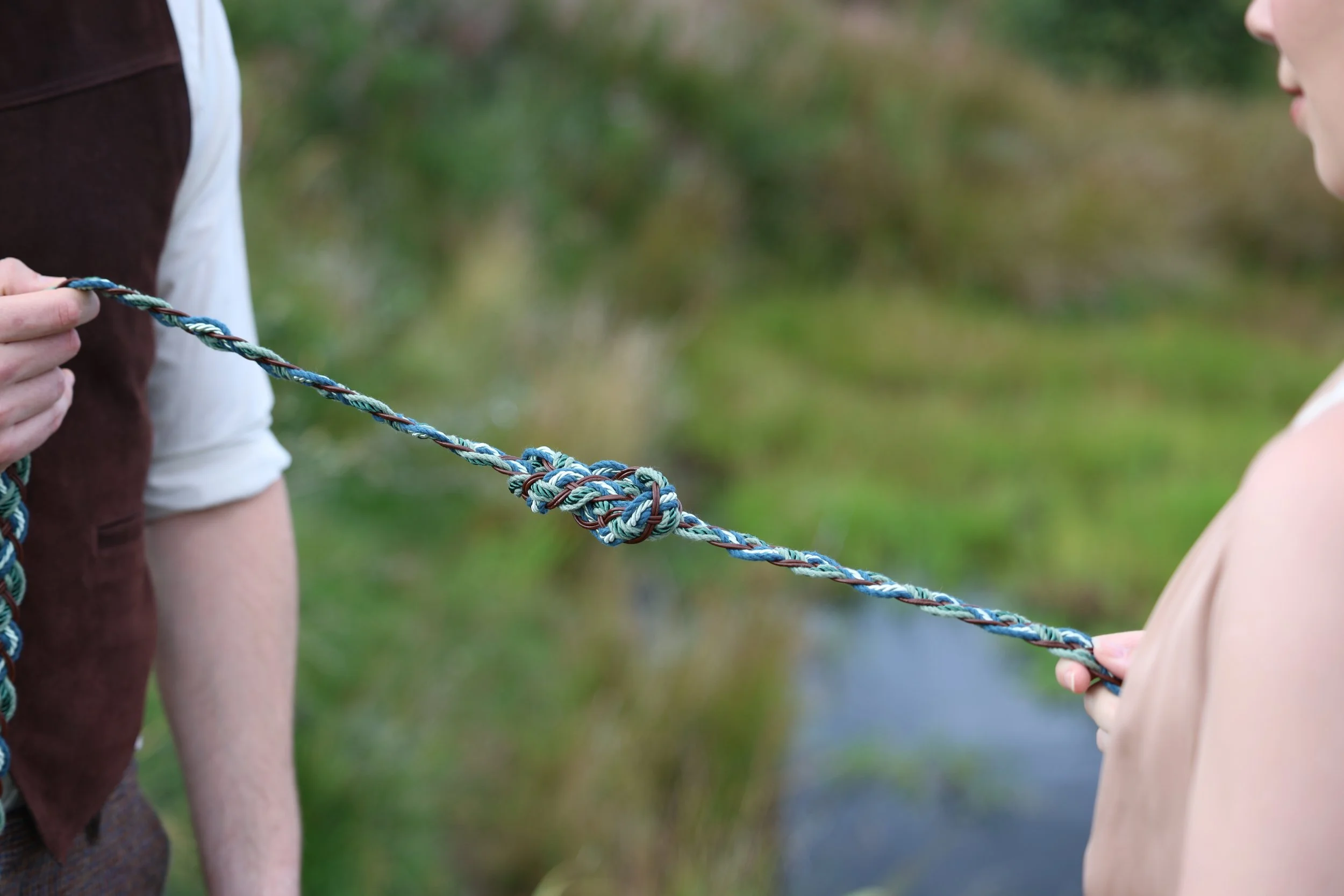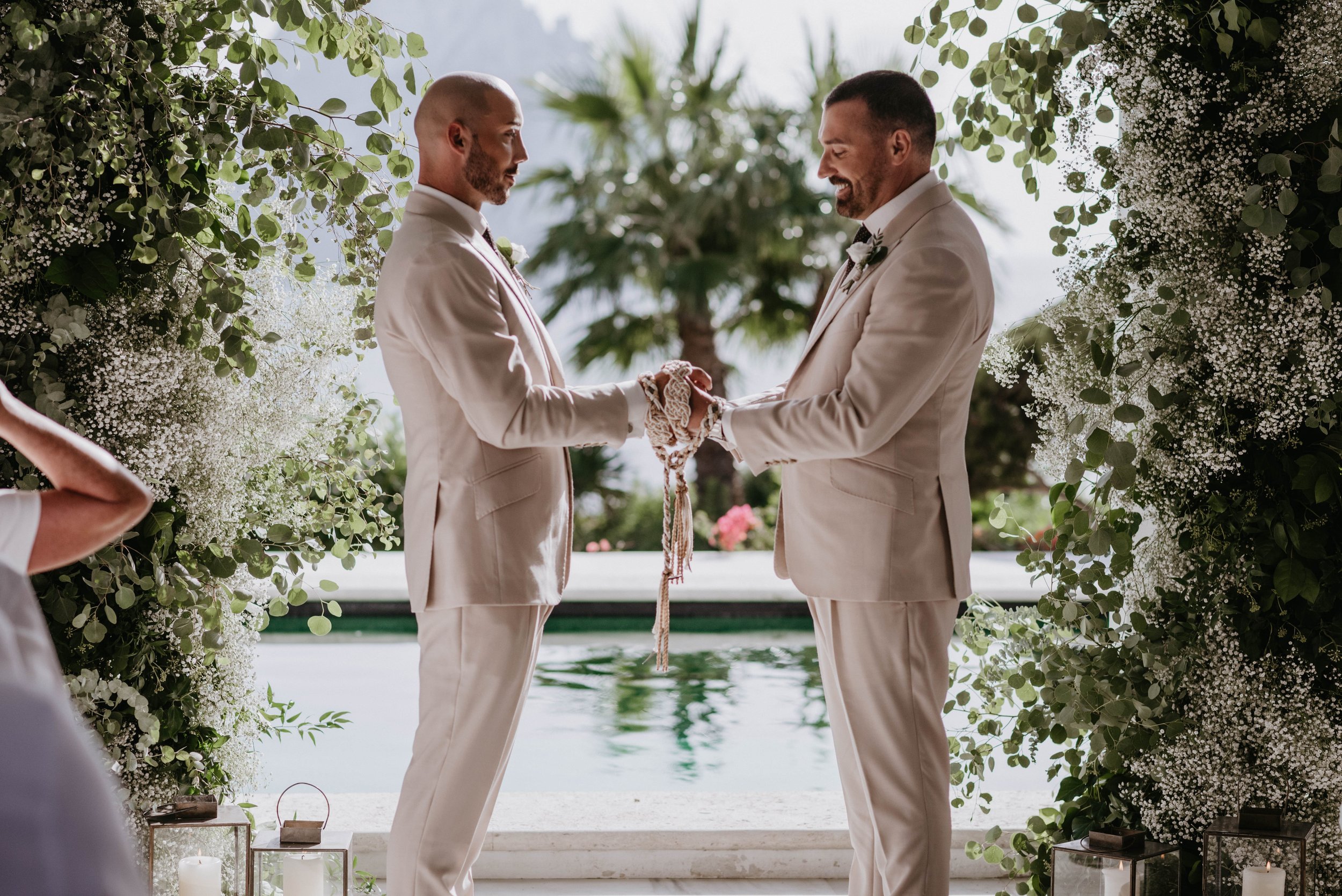Handfasting as an act of rebellion
One of the beautiful things about partnership is that, while it can draw on tradition in many different forms, there is something innately rebellious about it. After all, by making a commitment to someone else, you create something new and original - something that can give you strength in a world that can be hostile to forging your own path. This post is about the way that handfasting - as a practice that is flexible, inclusive, and more than a little subversive - can be part of a ceremony that celebrates not just a conventional ideal but your unique love.
At a moment when love and relationships are increasingly politicised, it is important for me to affirm my commitment to inclusivity and openness. I have written before about the queries I sometimes receive about the origins of handfasting, and its cultural and religious background. In this post, I want to emphasise that despite attempts by self-appointed “traditionalists” to police how others engage with handfasting - by grounding it in patriarchy, heteronormativity, or a rigid idea of gender - it is a practice that anyone is free to interpret, and it is based on the idea of active consent. It is not just handfasting’s past that matters, but the future; as it grows in popularity, it is becoming part of so many diverse relationships and ceremonies, expanding our understanding of what love can look like and how it can be celebrated.
While it’s hard to say definitively where handfasting comes from, we can say with confidence that it has existed for several centuries as an open practice. Because it is not associated with any particular religion or culture, it has always been an option for people who wanted to marry outside the mainstream. This is one of the reasons that handfasting is so strongly associated with elopement, and why it has offered so much as a ritual during the time of COVID: it is simple, easily adapted to different kinds of ceremony, and is a powerful symbol of joining together. At its heart, it is based around the people who tie the knot, and it is rooted in the idea of consent.
Medieval handfastings and marriages were performed without the presence of a priest being necessary, as the ritual was seen as being, first and foremost, between the people marrying. This has remained at the centre of handfasting ever since - fundamentally, it is a promise freely made between people who love and choose each other. The revival of handfasting in the 20th century was driven by neopagans, hippies, and the counterculture, as people began seeking alternatives to traditional church wedding ceremonies that would still provide a sense of ritual and symbolism. While they may have been driven by an interest in handfasting as “traditional”, they were also seeking something new that embodied hope for the future.
Nowadays, handfasting has been incorporated into legal marriage, and can be performed by a licensed celebrant from any tradition (including - but not limited to - Christian, pagan, agnostic, and humanist beliefs). Many celebrants are very open to new ways of incorporating handfasting into a ceremony, and will often emphasise that what matters most is that those being handfasted are able and willing to give their consent to each other. Handfasting is increasingly not just a ritual for heterosexual romantic partnership - it is meaningful for celebrating same-sex and queer relationships of all kinds, polyamorous relationships, the blending of families, and friendships. It will continue to change and transform alongside our collective ideas of what love and family look like.
Paradoxically, this is all possible because in its original form, handfasting is so simple: it is about choosing each other.
As an artisan, I’m committed to helping you create the handfasting cord that celebrates you and your love - and this is especially true for anyone who is minoritised or vulnerable to the political shift towards patriarchy and heteronormativity. It isn’t just about what I believe is right - it is about affirming you in your choice. Handfasting has been there for so many people who wanted to celebrate their love throughout history; it is here for you, and it will always be here for you.



